 Saturday the 28th of February was the second Covent Garden Raspberry Pi Jam – and two Essex amateurs were there to promote the hobby:.
Saturday the 28th of February was the second Covent Garden Raspberry Pi Jam – and two Essex amateurs were there to promote the hobby:.
Following an invite at the Southend Jam, Charlie M0PZT and Nick 2E0DVX attended the second Covent Garden Raspberry Pi Jam this weekend, representing Essex Ham, Ham Goodies and amateur radio.
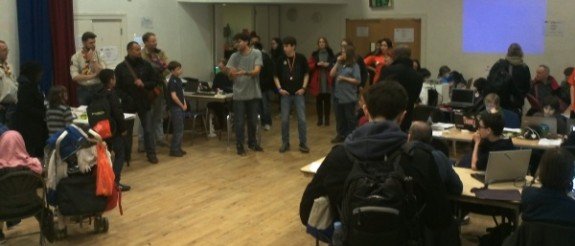
The event was well-attended with a queue forming for the start and plenty of people interested in electronics, Raspberry Pi, programming, and radio, ready to explore the demonstrations and workshops.
The team from CoderDojo were running an open workshop where people of all ages could learn to program in Scratch, while a room upstairs was dedicated to construction, soldering and coding Minecraft.
At the radio table we were on hand to answer questions and spark interest in amateur radio, with a scrolling video showing field days in Essex, the JOTA event and ISS contacts, as well as demonstrating the inexpensive RTL SDR receiver on the amateur bands, handheld radios and DMR.
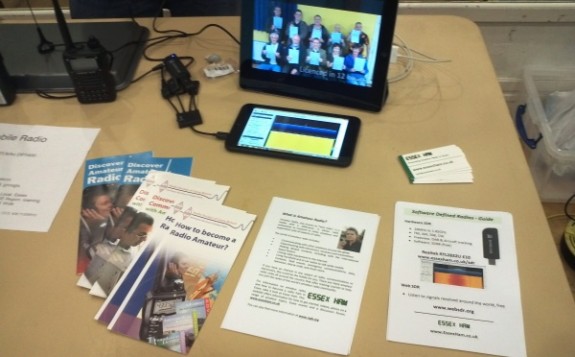
Charlie M0PZT’s Arduino-based Morse keyer (see below) was a real hit, with a chance to try sending messages using a paddle key, and to learn that CW is alive, well and actively used to make contacts across the world.
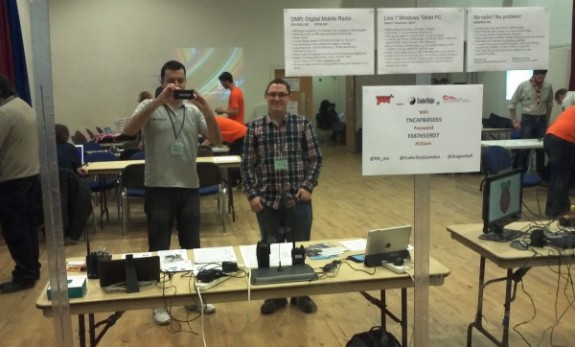
A number of visitors came back to the table to ask more questions, share their projects with us, and to pick up our RSGB leaflets on the foundation licence.
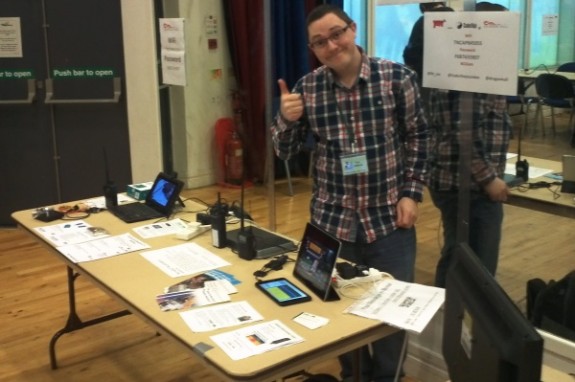
This was our first visit to the Covent Garden event, and we’ve been invited back to share radio with more visitors next time.
Thanks to Nick 2E0DVX for the report, Charlie M0PZT for the photos, and to both of you for trekking outside of Essex to promote amateur radio to the tech-savvy attendees at the Covent Garden Raspberry Jam
More on the Morse Keyer
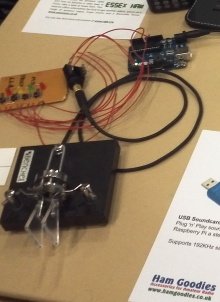
The Arduino-based Morse keyer, created by Charlie M0PZT is a Dot/Dash keyer that allows you to either practice Morse locally via a speaker or connect it to your radio’s “key” jack and use it to transmit. If you’ve built a simple CW transmitter with a “straight” key input, you’ll need a keyer circuit to generate the repeating dits+dahs to use a paddle key. The code supports Iambic A/B mode and the speed (words per minute) can be varied either in code or via an external variable resistor.
Additionally, there’s an text-to-Morse converter to handle the sending of 4 message memories (such as a CQ call) as well as accept incoming text from the Arduino’s USB socket. This connects to PZTLog Pro and can be used to send logbook-based macros during a contest or portable operations. A future revision will see a Bluetooth module added so that it can be controlled from a tablet/smartphone.
Being Arduindo-based, it can be as simple as the raw controller, such as a Nano, or with Bluetooth, an LCD module and some buttons – can form an extensive Shack-based Morse Keyer with visual display. It could even send practice CW with the addition of some “random generate” code.
Although there are existing solutions available (such as the K1EL PIC-based keyer), this is a 100% home-brew solution from code to completion – a great self-learning exercise.
Take a look at Ham Goodies for links to kits and components

